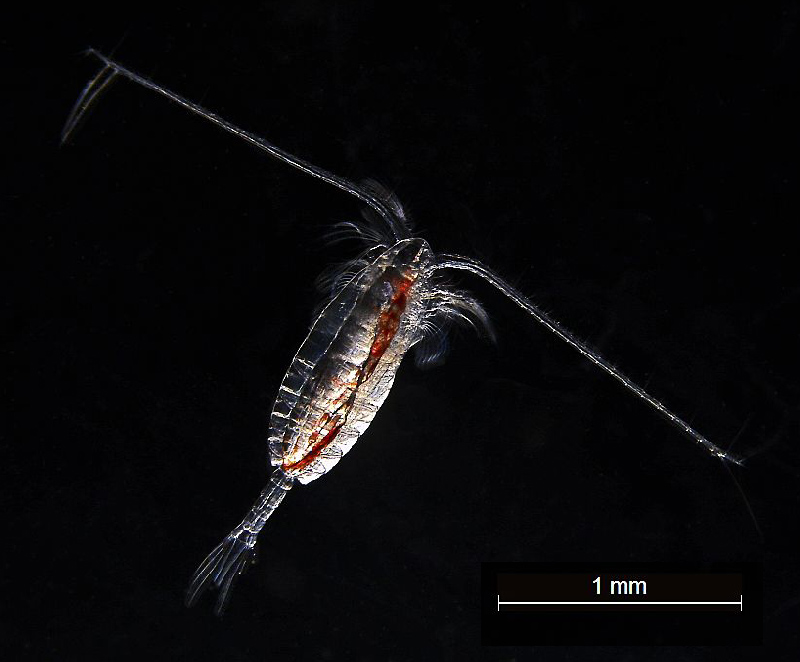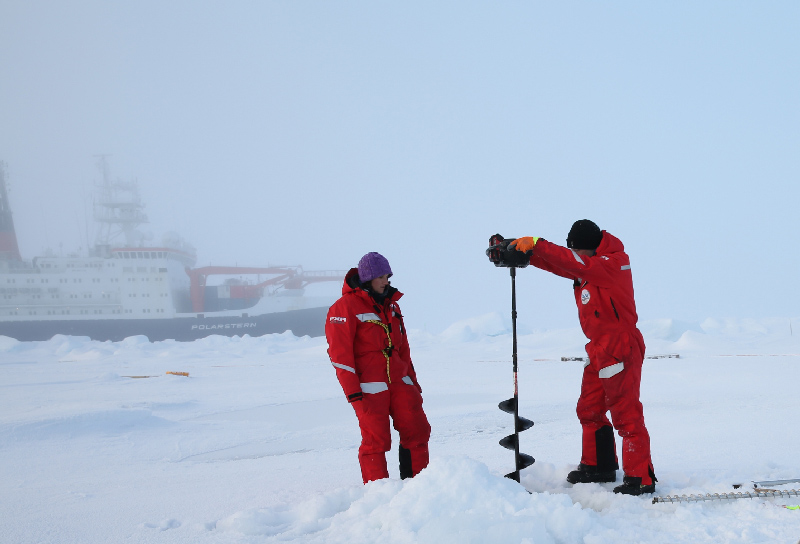Hauke Flores still remembers a late September day during his first Arctic expedition 11 years ago when the ship’s sampling nets came up “blinking” with bioluminescence. The catch was swarming with tiny copepods that had begun their seasonal ascent from the deep to spend the winter foraging on the underside of sea ice.
Now Flores, a polar ecologist at the Alfred Wegener Institute in Bremerhaven, Germany, has coauthored a study warning that ongoing ice loss in the Arctic could force copepods and other zooplankton to stay at depth for longer, cutting their winter feeding time by up to a month.

The Arctic has been losing sea ice at a rate of almost 13% per decade since the start of satellite monitoring. As ice floes shrink and thin, more sunlight reaches deeper into the ocean.
Tiny floating zooplankton move up and down the water column in a finely tuned balancing act between finding microscopic food under the ice and searching for safety from predators in the darkness. Light intensity, Flores said, is an important signal for this vertical migration, which happens throughout the world’s oceans: Zooplankton drift down during the day and up at night in one of Earth’s largest synchronized movements of biomass.
In the Arctic, however, where the Sun sets only once a year, the migration is seasonal. Winter-active zooplankton move up to feed on ice algae and microbes during the polar night. They prefer twilight conditions and stay below a certain light level known as critical irradiance, ascending only when the light dims as the Sun dips below the horizon.
A Changing Arctic Lightscape
Previous studies tracked Arctic zooplankton as they migrated, suggesting that their ascent was particularly sensitive to low light intensities. But they did not collect simultaneous information on light conditions.
In 2020, scientists aboard the German icebreaker Polarstern tethered an autonomous package of instruments to an ice floe to collect data as it drifted more than 1,000 kilometers through the darkness of the polar night, from close to the North Pole to offshore Greenland. For 6 months and across the two twilight periods of the Arctic fall and spring, the instruments tracked zooplankton density in the top 50 meters of the water column and simultaneously measured irradiance below the ice.

The data showed that irradiance must be as low as 0.00024 watt per square meter to trigger the zooplankton’s ascent. “This is a very low level of light, which you can only obtain during twilight and with a sufficient amount of snow and sea ice to attenuate the light that is coming through,” said Gaëlle Veyssière, a sea ice physicist at the British Antarctic Survey and a coauthor of the new study.

Veyssière and Flores and their colleagues then used four global climate models to simulate future sea ice retreat and resulting changes in light transmission under two scenarios: one in which reduced carbon dioxide emissions keep global average warming below 2°C through the end of the century and another representing a future with a 4.4°C warmer average temperature.
The models showed that if ice loss in the Arctic continues unabated, by 2050 zooplankton will spend up to a month longer in the deep and less time feeding, challenging some species’ winter survival.
“We know that light is coming in…even though the Sun is below the horizon.”
“Previous observations were limited to snapshots in time and space,” said Tom Langbehn, a polar scientist at the University of Bergen who was not involved in the study. “Observations like these help fill important gaps in our understanding and establish a baseline of ecological interactions.”
They also improve data quality, he said. “Because we tend to sample from research vessels that are lit and noisy, there is an inherent but often neglected bias in such samples. This bias can be minimized by using autonomous platforms.”
The climate simulations the group used required some innovation because the models can’t account for light levels below about 0.5 watt per square meter, Veyssière said. The researchers had to develop a separate model to capture irradiance during twilight because “we know that light is coming in…even though the Sun is below the horizon.”
Food Webs in the Twilight
“You must imagine sea ice like a sponge.”
During the twilight period at the start of the Arctic winter, organic matter produced by a late-season bloom of ice algae becomes a critical carbon source for winter-active zooplankton. “You must imagine sea ice like a sponge,” Flores said. “There are little channels and caves filled with brine where detritus can accumulate and feed microorganisms and some larger organisms.”
Migrating zooplankton species cannot build up enough fat stores to get through winter in a dormant state. They need to feed throughout. But the changes in light conditions that will accompany thinner sea ice mean zooplankton will arrive at the ice underside later, missing most of the food. This will likely have follow-on effects for the Arctic food web and carbon fluxes.
Copepods are tiny crustaceans that make up one of the largest groups of zooplankton. The bioluminescent copepods Flores saw on his first voyage, Metridia longa, are one of the most abundant species in the Arctic Ocean. Another important seasonal migrant is the centimeter-sized Calanus spp. “[Calanus copepods are] the main food of the polar cod, which is the main food of seals and so on,” Flores said.
“Any negative repercussions for the zooplankton will have impacts on the whole food web because the zooplankton is the switch that transmits the carbon to higher predators,” he explained.
—Veronika Meduna (@VeronikaMeduna), Science Writer

